This article was co-authored by Chris M. Matsko, MD. Dr. Chris M. Matsko is a retired physician based in Pittsburgh, Pennsylvania. With over 25 years of medical research experience, Dr. Matsko was awarded the Pittsburgh Cornell University Leadership Award for Excellence. He holds a BS in Nutritional Science from Cornell University and an MD from the Temple University School of Medicine in 2007. Dr. Matsko earned a Research Writing Certification from the American Medical Writers Association (AMWA) in 2016 and a Medical Writing & Editing Certification from the University of Chicago in 2017.
There are 9 references cited in this article, which can be found at the bottom of the page.
wikiHow marks an article as reader-approved once it receives enough positive feedback. This article received 14 testimonials and 94% of readers who voted found it helpful, earning it our reader-approved status.
This article has been viewed 330,116 times.
Seizures happen when brain cells (neurons) get electrically overloaded or "short circuited," which leads to a change of consciousness, collapse and usually convulsions.[1] Seizures are the main symptom of a brain condition called epilepsy, although many factors can trigger one-time or occasional seizures, such as stress, head injuries, dehydration, low blood sugar, some foods and a variety of chemicals found in food. No single food or food additive triggers seizures in everybody, but some people are much more sensitive to gluten, soy products, processed sugar, monosodium glutamate (MSG) and artificial sweeteners (particularly aspartame). Try avoiding these foods / additives if you suspect they are triggering your seizures.
Steps
Avoiding Potentially Risky Foods
-
1Be careful with gluten. Gluten is a general term for the proteins found in wheat, rye, barley and a few other grains — it's what makes bread, pasta and cereals chewy.[2] Allergic reactions to gluten and related intestinal problems seem to be on the rise during the last few decades, but gluten can also trigger seizures in some people due to its inflammatory nature. As such, try adopting a gluten-free diet for a few months or so and see if your seizures disappear.
- Gluten has always been in grains, but different agricultural practices, hybridization and genetic modifications starting back in the 1970s changed some of its properties, which has changed our body's reaction to it.
- Aside from the gluten content, grains are also rich in glutamate and aspartate, two very excitatory amino acids that impact the brain's electrical activity.
- In addition to most bread, baked goods, pasta and cereal, gluten is also found in many canned soups, sauces, salad dressings, vegetarian products and even beer.
-
2Watch out for soy products. Soy is a legume and considered an important crop because it's a cheap source of plant protein. Soy products and additives have become very popular over the past few decades, and are commonly found in baby food and infant formulas. Unfortunately, soy is one of the most common food allergens among kids and able to trigger serious allergic reactions and potential seizures.[3]
- If your child has seizures, consider removing soy products from their diet and see how they respond. It may be labeled as vegetable protein, textured vegetable protein or soy isolate — sometimes it is not even labelled.
- Like most grains, soy is also very high in glutamine, and excitatory amino acid that affects brain chemistry.
- Soy and related derivatives are found in soy sauce, tofu, edamame, baby formula, many baked goods, cereals, canned soups, salad dressings, processed meats, hot dogs, canned tuna, energy bars, low-fat peanut butter and most non-dairy alternatives (soy milk, ice cream, etc.).
Advertisement -
3Cut back on processed sugar. Although glucose (a simple type of sugar) is typically considered the main fuel source for the brain, too much of it is linked to promoting or triggering seizures in some people. Cutting back on sugar can control seizures through reducing any unpredictable and abnormal bursts of electrical activity in the brain, according to scientists.[4] This is particularly important for epileptics, but also people who have a "sweet tooth" that suffer from seizures.
- A low sugar, high-fat diet (called a ketogenic diet) is beneficial for anyone who experience seizures because it forces brain neurons to stop relying on glucose for fuel and use ketone bodies (from fat) instead.
- Natural sugars directly from fresh fruit and veggies are not really the culprit. Instead, cut back on heavily processed sugars such as high-fructose corn syrup, baking sugar and table sugar.
- Candy, chocolate, ice cream, frozen desserts, most baked goods, many breakfast cereals, specialty coffees, soda pop and many sweetened beverages are loaded with processed sugars.
-
4Consider avoiding dairy. Dairy products are other types of problematic foods and drinks that create a lot of allergic reactions, as well as some seizures, in children and adults. Not only are there a variety of hormones and sometimes contaminants in cow's milk that negatively impact the brain, but dairy is also high in glutamine. Many generations ago, dairy offered much more nutritional and health benefits than negatives, although the same can't be said in modern times.
- Switching to dairy-free diet might be the healthiest choice for some people, especially if they are allergic, lactose intolerant or experience seizures.
- Dairy products, such as ice cream and yogurts, are often mixed with lots of processed sugar, which can be a "double whammy" for triggering seizures.
- Cow-based cheeses that appear to be the worst for triggering seizures and other negative reactions include Parmesan, cheddar, Swiss, Monterey Jack and mozzarella.
- For epileptics and others with seizures, goat-based dairy products seem to be a very good alternative to cow-based ones, certainly much more so than soy alternatives.
Avoiding Potentially Risky Additives
-
1Don't consume MSG. Many food additives, such as MSG, are considered to be "excitotoxins" because they stimulate nerve cells to rapidly fire and burn out, which can trigger a seizure in the brain.[5] MSG is widely used in the food industry and restaurants as a flavor enhancer — it intensifies the meaty, savory flavor of food. Avoiding MSG can be difficult because so many food products sold in grocery stores and used in restaurants contain it.
- MSG is often listed on food labels as "flavoring," because the manufacturers know that MSG has developed a bad reputation.
- Keep in mind that fresh, natural foods shouldn't and often don't require flavor enhancement, so preparing your own meals at home with fresh ingredients is the best way to avoid MSG.
- MSG is particularly excitatory to neurons because it's made from the amino acid glutamate.
-
2Eliminate artificial sweeteners. A number of artificial sweeteners, particularly aspartame (NutraSweet, Equal, diet soda), display very strong excitotoxic activity once they're in your body, causing excessive nerve cell firing and increasing the risk of epileptic attacks and other types of seizures.[6] This isn't surprising as aspartame is made from aspartate, a very excitatory amino acid, which tends to irritate the nervous system in large amounts or in certain forms.
- Aspartame also contains phenylalanine, which is toxic to neurons and also linked to neurological damage and seizure activity.[7]
- Aspartame is one of most widely consumed excitotoxic food additives in the world.
- Other sweeteners that may also cause negative effects to the brain and increase the risk of seizures include Splenda and saccharin.
- Artificial sweeteners are very widespread and typically found in products labelled as "sugar-free" and "low calorie."
-
3Avoid carrageenan. Another common food additive to avoid if you're experiencing seizures is carrageenan, because it can cause blood sugar disturbance, intestinal irritation and inflammation in the body.Carrageenan is derived from red seaweed and often added to drinks to keep their ingredients from separating — it's in many nutritional shakes, dairy products and dairy alternatives, such as soy milk.
- Carrageenan is also commonly found in soups, broths, yogurts, chocolate and ice cream to give them thicker consistency (as a stabilizer) and to make low-fat versions taste fuller.
- Carrageenan has no nutritional value and is often within products listed as "organic."
- Scan your food labels. Carrageenan must legally appear on food labels, so check them closely and avoid foods (even organic varieties) that contain it.
Knowing When to See a Doctor
-
1Understand the symptoms. A seizure is the symptoms or changes in behavior that occur after an episode of abnormal electrical activity in your brain.[8] Seizures can range from mild, involving only staring spells, to severe and don't necessarily involve convulsions (body shaking), tonic-clonic seizures. Common signs of a seizure include: black outs, drooling or frothing, rapid eye movements, grunting, loss of bladder / bowel control, sudden mood changes, collapsing, teeth clenching, muscles spasms and jerking limbs.
- Symptoms of a seizure may stop after a few seconds or minutes, or sometimes go on for up to about 15 minutes.
- You may get warning signs before having a seizure, such as tasting a bitter or metallic flavor, smelling the scent of burning rubber, seeing flashing lights or wavy lines, and feeling anxious or nauseous.[9]
-
2Understand the cause. Most seizures are not an indication of epilepsy, which is a neurological disorder characterized by disrupted nerve cell activity in the brain.[10] Instead, seizures can be triggered by a wide variety of environmental factors, including food allergies and toxic reactions to numerous food additives (as noted above).
- Finding the trigger can be very difficult, but necessary if you don't want your child or yourself to be on powerful anti-seizure medication for many years.
- Seizures are common in childhood, but usually fade away during adolescence. Infections, high fevers, head injuries, and negative reactions to medication are common causes of childhood seizures. Usually, in children it depends on how high and how fast the fever develops. The higher the fever forms and the faster the temperature rises, the more at risk the child is to have a fever associated seizure. You do not need to be put on seizure medication after one episode of a seizure.
- Severe migraine headaches commonly mimic mild seizures.
- Sometimes, no cause can be found for seizures, in which case they are called idiopathic (of unknown origin) seizures.
-
3See your doctor. Make an appointment with your doctor immediately if you or a family member shows any sign of having a seizure. Although epilepsy is a serious condition, it's not nearly as life threatening as some other causes of seizures, such as a brain tumor, stroke, brain infection (meningitis) or serious head injury.[11] Your doctor will run a variety of tests to diagnose the condition so appropriate treatment can be given.
- Testing will likely include: blood tests, CT scan or MRI of the head, EEG of the brain (to see it's electrical patterns) and maybe a spinal tap for fluid to rule out meningitis.
- Allergies to food and toxic reactions to chemical in foods are typically not diagnosed in a hospital setting, particularly in the emergency department.
- As such, you'll likely need a referral to an allergy or seizure specialist who has experience diagnosing environmental causes of seizures.
Seizure Diary Template and List of Foods That Contain Gluten
References
- ↑ http://www.hopkinsmedicine.org/neurology_neurosurgery/centers_clinics/epilepsy/seizures/
- ↑ https://celiac.org/live-gluten-free/glutenfreediet/what-is-gluten/
- ↑ http://acaai.org/allergies/types/food-allergies/types-food-allergy/soy-allergy
- ↑ http://www.eurekalert.org/pub_releases/2012-05/cp-wcs051812.php
- ↑ http://www.huffingtonpost.com/alison-rose-levy/hold-the-msg-food-trigger_b_333404.html
- ↑ http://www.huffingtonpost.com/alison-rose-levy/hold-the-msg-food-trigger_b_333404.html
- ↑ http://www.ncbi.nlm.nih.gov/pmc/articles/PMC1474447/
- ↑ https://www.nlm.nih.gov/medlineplus/ency/article/003200.htm
- ↑ https://www.nlm.nih.gov/medlineplus/ency/article/003200.htm
Expert Q&A
-
QuestionCan anyone have a seizure?
 Chris M. Matsko, MDDr. Chris M. Matsko is a retired physician based in Pittsburgh, Pennsylvania. With over 25 years of medical research experience, Dr. Matsko was awarded the Pittsburgh Cornell University Leadership Award for Excellence. He holds a BS in Nutritional Science from Cornell University and an MD from the Temple University School of Medicine in 2007. Dr. Matsko earned a Research Writing Certification from the American Medical Writers Association (AMWA) in 2016 and a Medical Writing & Editing Certification from the University of Chicago in 2017.
Chris M. Matsko, MDDr. Chris M. Matsko is a retired physician based in Pittsburgh, Pennsylvania. With over 25 years of medical research experience, Dr. Matsko was awarded the Pittsburgh Cornell University Leadership Award for Excellence. He holds a BS in Nutritional Science from Cornell University and an MD from the Temple University School of Medicine in 2007. Dr. Matsko earned a Research Writing Certification from the American Medical Writers Association (AMWA) in 2016 and a Medical Writing & Editing Certification from the University of Chicago in 2017.
Family Medicine Physician Yes, anybody can have a seizure at any time. Sometimes seizures can occur idiopathically (without a known cause).
Yes, anybody can have a seizure at any time. Sometimes seizures can occur idiopathically (without a known cause). -
QuestionCan eating honey help decrease seizure activity in a child?
 Chris M. Matsko, MDDr. Chris M. Matsko is a retired physician based in Pittsburgh, Pennsylvania. With over 25 years of medical research experience, Dr. Matsko was awarded the Pittsburgh Cornell University Leadership Award for Excellence. He holds a BS in Nutritional Science from Cornell University and an MD from the Temple University School of Medicine in 2007. Dr. Matsko earned a Research Writing Certification from the American Medical Writers Association (AMWA) in 2016 and a Medical Writing & Editing Certification from the University of Chicago in 2017.
Chris M. Matsko, MDDr. Chris M. Matsko is a retired physician based in Pittsburgh, Pennsylvania. With over 25 years of medical research experience, Dr. Matsko was awarded the Pittsburgh Cornell University Leadership Award for Excellence. He holds a BS in Nutritional Science from Cornell University and an MD from the Temple University School of Medicine in 2007. Dr. Matsko earned a Research Writing Certification from the American Medical Writers Association (AMWA) in 2016 and a Medical Writing & Editing Certification from the University of Chicago in 2017.
Family Medicine Physician No, never give honey to children. It can cause infant botulism, which is rare but very serious.
No, never give honey to children. It can cause infant botulism, which is rare but very serious.
Warning
- Seizures are not always an indication of epilepsy, brain damage or any other incurable condition. Instead, they are often related to negative reactions to dietary factors.
About This Article
If you’re prone to having seizures when you eat certain foods, try eliminating some of the common culprits from your diet. For example, if you suspect you might have an allergy or sensitivity to wheat gluten, try going gluten-free for a few months and see if your symptoms improve. You can also try cutting out soy, which is one of the more common allergen and seizure triggers, especially in children. If you have a sweet tooth, watch out for processed sugars like those found in candies, soda, and baked goods. Additionally, you might avoid dairy products, especially if you’re lactose intolerant. Read on for more advice from our Medical co-author, including which additives to avoid.
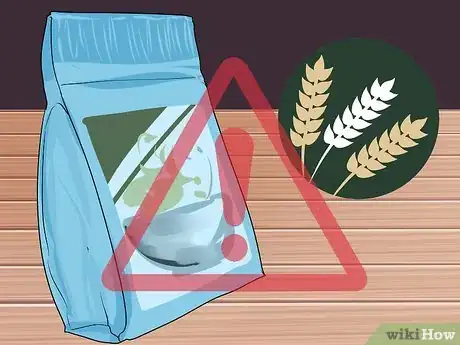
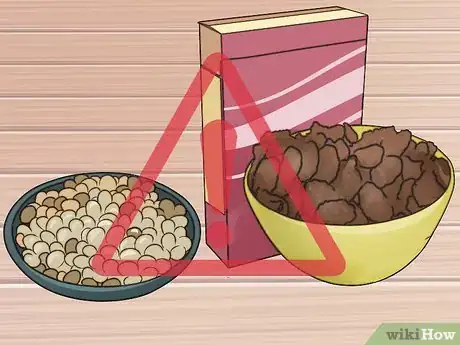

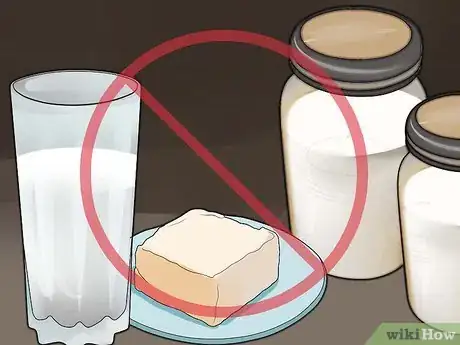


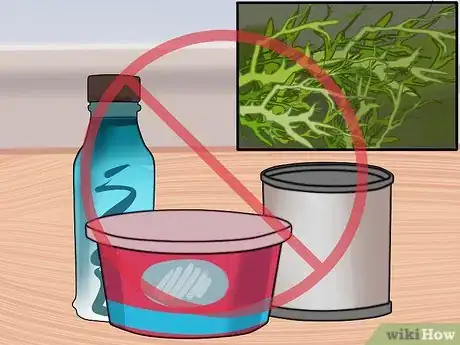



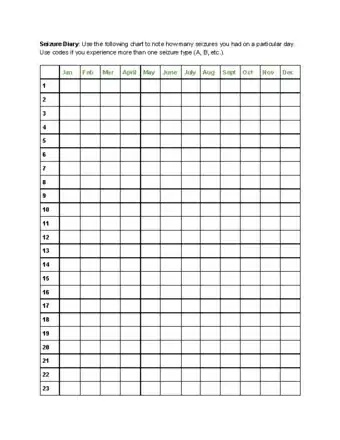
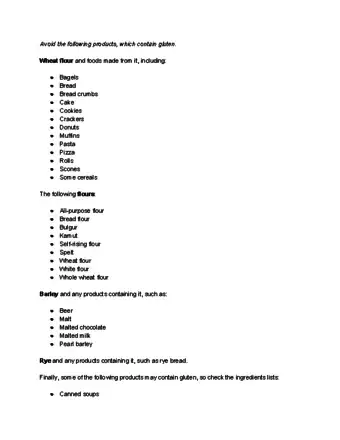





























































Medical Disclaimer
The content of this article is not intended to be a substitute for professional medical advice, examination, diagnosis, or treatment. You should always contact your doctor or other qualified healthcare professional before starting, changing, or stopping any kind of health treatment.
Read More...